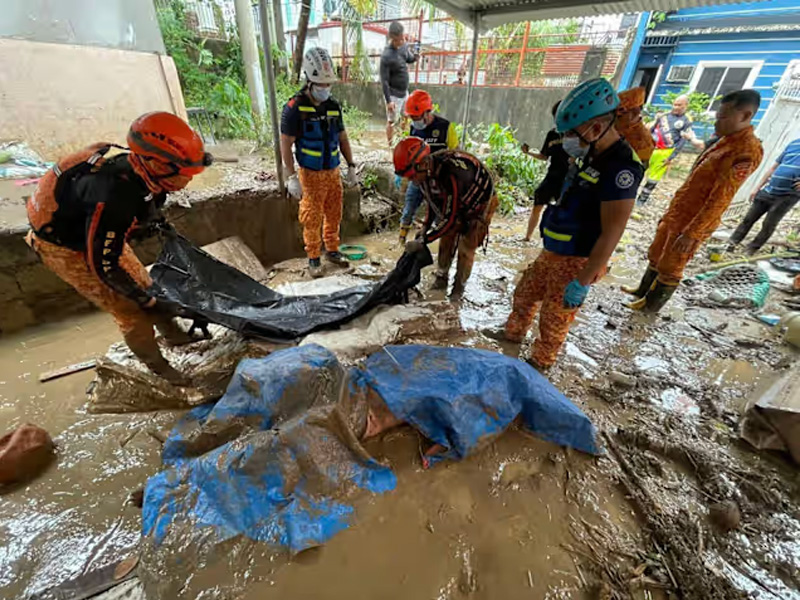
At least 66 people have been confirmed dead and hundreds of thousands forced to flee their homes as one of the strongest typhoons of the year, Typhoon Kalmaegi, tore through the central Philippines this week.
Authorities say the storm — locally named Tino — unleashed torrential rains and powerful winds that flooded entire towns across the central island of Cebu, where most of the fatalities occurred. Another 26 people remain missing.
“The situation in Cebu is really unprecedented,” provincial governor Pamela Baricuatro said in a Facebook post late Tuesday. “We were expecting the winds to be the dangerous part, but the floodwaters are what’s truly putting our people at risk. The devastation is heartbreaking.”
Baricuatro has since declared a state of calamity in Cebu to speed up relief efforts. Videos shared online show residents stranded on rooftops as muddy water and debris engulf neighbourhoods, sweeping away cars, shipping containers, and small buildings.
Among the dead were six crew members of a Philippine Air Force helicopter that crashed in Mindanao, south of Cebu, while assisting in relief operations. The aircraft went down on Tuesday near Agusan del Sur after losing communication mid-flight. “Six bodies have been recovered, believed to be of the pilot and crew,” a military spokeswoman confirmed.
Typhoon Kalmaegi made landfall early Tuesday, packing winds of up to 130km/h (80mph). Though it has since weakened, it continues to lash parts of the Visayas region and is expected to move across the South China Sea toward Vietnam by Wednesday.
Rafaelito Alejandro, deputy administrator at the Office of Civil Defence, told local radio station DZMM that rescue teams are struggling to reach isolated communities. “The challenge is the debris and cars on the road. There’s a lot for us to clear,” he said. “We’re waiting for the skies to clear before we can deliver more aid.”
Most of the deaths were caused by drowning, according to officials. Streets have turned into rivers of brown water, and rescue teams have been forced to use boats to reach trapped residents. “I’ve been here for 28 years, and this is by far the worst we’ve experienced,” said Don del Rosario, a Cebu City resident who sheltered on an upper floor during the storm.
The National Disaster Risk Reduction and Management Council reports that over 400,000 people have been displaced so far. Many are now in evacuation centres while authorities race to restore power and clear major roads.
Kalmaegi’s arrival marks yet another blow to the Philippines, which is struck by an average of 20 typhoons every year. The storm follows back-to-back typhoons — Ragasa (Nando) and Bualoi (Opong) — that claimed more than a dozen lives just a month ago.
The country has also been grappling with an extraordinarily wet monsoon season and a powerful 6.9-magnitude earthquake that hit Cebu in late September. Both events left residents reeling and raised renewed anger over substandard flood-control projects blamed on corruption.
Kalmaegi is now forecast to head towards Vietnam, where forecasters warn of record-breaking rainfall and potential flash floods in the days ahead.
Melissa Enoch



